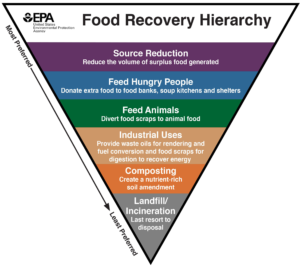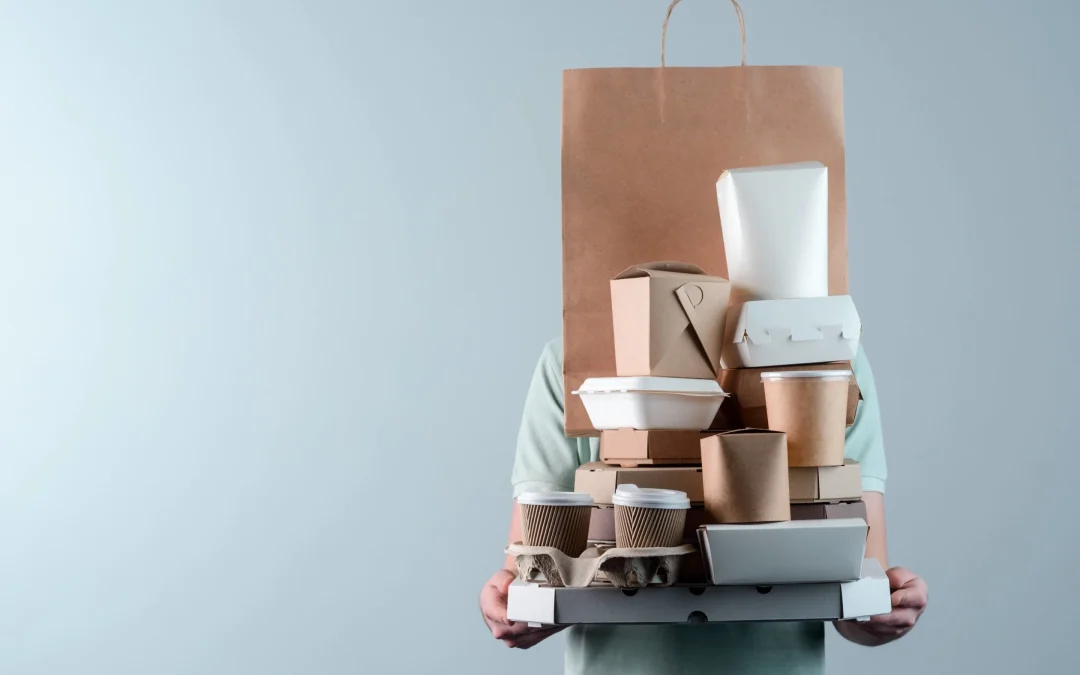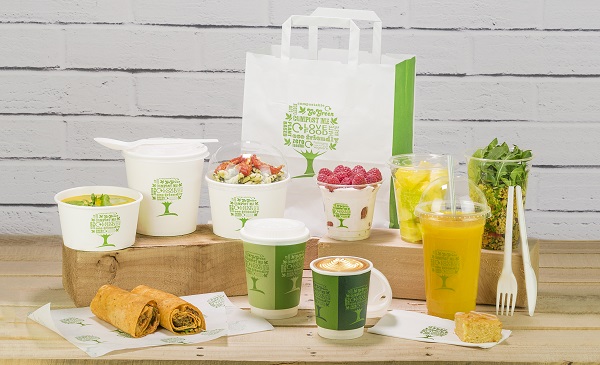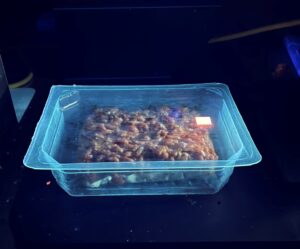The Role of Food Packaging
Packaging originally served as just a container, however, its role has evolved to have a multitude of functions. Whether it’s made from glass, plastic, metal or paper, packaging protects the food from damage, spoilage, and contamination, potential to extend shelf life and provides consumers with ingredient and nutritional info and also advertising. However, packaging must balance food protection with other factors such as energy and material costs and heightened social and environmental consciousness. The goal of food packaging is to contain food in a cost-effective way that satisfies industry requirements and consumer desires, maintains food safety, and minimises environmental impact.
In recent years, there has been growing concern over the environmental impact of food packaging. As the demand for packaged food continues to rise, so does the need for sustainable packaging solutions. In this blog post, we will explore the significance of food packaging, its environmental implications, and the ongoing efforts to promote sustainability in this industry.
The Environmental Impact of Food Packaging?
While disposable packaging has been an essential part of food supply chains, environmental problems related to packaging waste have grown exponentially during the last decades. The environmental consequences associated with packaging materials are substantial. The key concerns include
- Resource depletion: Traditional packaging materials like plastic, aluminium, and paper often require large amounts of fossil fuels, water and timber for their production thus contributing to resource depletion.
- Greenhouse Gas Emissions: The manufacturing, transportation, and disposal of packaging materials contribute to greenhouse gas emissions, exacerbating climate change.
- Waste Generation: Improperly managed food packaging waste, particularly single-use plastics, can end up in landfills, water bodies, and ecosystems, causing pollution and harm to wildlife.
The growing consumer awareness and increasing regulatory requirements are putting pressure on FMCG and retailers to address sustainable packaging. Consumers widely equate eco-friendly and sustainable packaging to the source material, such as packages which are made of sustainable bioplastics and plant-based extracts, for example, wheat, wood, and bamboo, that are biodegradable and reusable.
Promoting Sustainability in Food Packaging
- Reduced Packaging Waste: The adoption of minimalist packaging design and the use of recyclable or compostable materials can significantly reduce packaging waste. Biodegradable and compostable alternatives to traditional packaging materials, such as bioplastics derived from renewable sources, show promise in mitigating environmental impact.
- Recycling and Circular Economy: Implementing effective recycling programs and promoting the use of recycled materials in packaging production can help create a circular economy, reducing the need for virgin resources and minimizing waste.
- Life Cycle Assessment (LCA): Conducting life cycle assessments of packaging materials allows for a comprehensive evaluation of their environmental impact. LCA considers the entire life cycle, from raw material extraction to disposal, providing insights into potential areas of improvement.
- Innovative Packaging Solutions: Research and development efforts are focused on developing innovative packaging solutions, such as edible or biodegradable films, smart packaging technologies that monitor food freshness, and nanotechnology-based antimicrobial coatings that extend shelf life.
Environmentally Friendly Packaging Materials & Practices
One of the most significant challenges in sustainable food packaging is the selection of materials. Traditional packaging materials such as plastics, metals, and glass have significant environmental impacts due to their production, transportation, and disposal. For example, plastics are known to have a long degradation time, which leads to a buildup of plastic waste in landfills and oceans. To address this challenge, researchers have developed new materials that are more environmentally friendly.
Recycled packaging
An approach to sustainable food packaging is the use of recycled materials. Recycled paper and cardboard are commonly used in food packaging, and recycled plastics are becoming more widespread. The use of recycled materials reduces the need for virgin materials and decreases the environmental impact of production and transportation.
Bioplastics
Bioplastics are made from renewable resources such as cornstarch, sugarcane, and potato starch. Bioplastics have the advantage of being biodegradable and compostable, which means they can break down naturally in the environment. However, it should be noted that not all bioplastics are created equal, and some may still require industrial composting facilities to break down completely.
Compostable packaging
Compostable means the material has the ability to naturally decompose back into the earth. The major benefits to the environment are that compostable packaging requires less carbon to produce, reduces the amount of waste sent to landfill and provides the earth with life-promoting nutrients. For example, Vegware is a manufacturer of plant-based compostable foodservice packaging which make their products from plants using renewable, lower carbon and recycled or reclaimed materials. These products are designed to be commercially compostable with food waste.
Sustainable Practices
Sustainable food packaging also involves considerations beyond material selection and design. For example, the carbon footprint of food packaging can be reduced by optimizing transportation and distribution systems to minimize energy use and emissions. Additionally, incorporating sustainable practices into the production process, such as renewable energy and water conservation, can further reduce the environmental impact of packaging production.
Strategies for food packaging sustainability
Not only are the source materials important for packaging sustainability, there are strategies and innovations which have been supported by EPA and other environmental organisations which address the demand and need for reduction of waste. Two examples include the strategy; Source Reduction and the innovation; SMART packaging.
Source reduction
Source reduction, also known as waste prevention or minimization, is a key strategy for achieving sustainability in food packaging. It involves reducing the amount of packaging used at the source, thereby minimizing waste generation and environmental impact. By focusing on source reduction, we can conserve resources, reduce energy consumption, and decrease the overall environmental footprint of food packaging. EPA considers source reduction the best way to reduce the impact of solid waste on the environment because it avoids waste generation altogether.
Here are some effective approaches to implement source reduction for food packaging:
- Right-Sizing Packaging: One of the most straightforward strategies for source reduction is optimizing the size and dimensions of packaging to match the product’s requirements. By eliminating excess space and unnecessary packaging layers, less material is used, resulting in reduced waste and improved efficiency in transportation and storage.
- Lightweighting: Using lightweight materials without compromising functionality and product protection can significantly reduce the amount of packaging waste. Lightweight packaging requires fewer resources during production, consumes less energy during transportation, and generates less waste at the end of its life cycle.
- Reusable Packaging: Implementing reusable packaging systems can significantly reduce waste generation. Reusable containers, crates, or pallets can be utilized throughout the supply chain, eliminating the need for single-use packaging. This approach not only reduces waste but also offers cost savings and promotes a circular economy model.
- Collaboration and Education: Promoting collaboration among stakeholders in the food industry, including manufacturers, retailers, and consumers, is crucial for successful source reduction. Educating consumers about the environmental impact of packaging waste and encouraging responsible consumption habits can drive demand for source-reduced packaging solutions.
Implementing source reduction strategies for food packaging requires a holistic approach, considering the entire life cycle of packaging materials, from sourcing to disposal. By reducing packaging waste at its source, we can contribute to a more sustainable and resource-efficient food system, minimizing environmental impact and promoting a circular economy.
The Food Recovery Hierarchy
EPA has introduced the concept of The Food Recovery Hierarchy. It prioritises actions organizations can take to prevent and divert wasted food. Each tier of the Food Recovery Hierarchy focuses on different management strategies for your wasted food. The top levels of the hierarchy are the best ways to prevent and divert wasted food because they create the most benefits for the environment, society and the economy. Here is the link to EPA website which details other strategies for the sustainable management of food, see the graph below which outlines source reduction as the most important strategy.

Innovative ideas for sustainable food packaging
Continuous innovation in packaging materials and technologies can contribute to source reduction. For example, the development of flexible packaging with thinner layers or innovative barrier coatings can reduce material usage while maintaining product integrity. Similarly, advancements in packaging machinery and automation can optimize material utilization and minimize waste during production.
The Kraft Heinz Company, are one example of FMCG which is focused on their company’s sustainable packaging ambition with its goal to make all packaging globally recyclable, reusable, or compostable by 2025. It is also an innovation that the company says will help it to achieve net-zero greenhouse gas emissions by 2050. They are partnering with Puplex to develop paper-based, renewable and recyclable bottles made from sustainably sourced wood pulp which plans to be used for Heinz Tomato Ketchup bottles and other packaging formats. Pulpex’s current data indicates the carbon footprint of Pulpex bottles is materially less than glass and plastic on a bottle-by-bottle basis. Once empty, the bottles are also expected to be widely and readily recyclable in paper waste streams.

In the alcohol industry, brands are working to reduce their packaging footprints. One company currently focusing on this is, Ace + Freak, a UK based cocktail company, sell their offerings in aluminium cans. While the aluminium cans are recyclable, the labels printed can be a hurdle to recyclability. So a polypropylene label that can be removed and recycled separately as two separate raw materials is used on the Ace+Freak cans.

Smart packaging
The smart packaging sector was valued at USD 38.16 billion in 2020, and is expected to reach USD 48.72 billion by 2026 (Mordor Intelligence, 2020). Technology has been able to elevate basic packaging for smarter manufacturing, increased sustainability, boosted customer trust, streamlined supply chain, and data-driven results. Smart packaging benefits include increased traceability, improved evidence of quality standards, reduction of lab costs for quality control, connecting the food processor with the end customer. Active packaging and intelligent packaging are two forms of smart packaging.
Intelligent packaging, can perform “intelligent” functions such as track the product, sense an attribute of the packaged food or its immediate environment (e.g., pH, temperature), and communicate it to the user (such as manufacturer or consumer). An example of intelligent packaging is Senoptica’s sensor technology, follow this link to find out how this technology can increase operation efficiency and reduce food waste by non-destructively testing MAP packs.
Challenges of sustainable food packaging
Sustainable packaging must have the same core functions as with the original packaging therefore there is a combination of challenges and complexities which go into parallel when updating and changing packaging. There are challenges to switching to sustainable packaging:
- Material Selection: Choosing sustainable packaging materials can be challenging due to various factors such as cost, availability, functionality, and compatibility with different food products. Balancing the desired properties of packaging materials, such as barrier properties or shelf life extension, with their environmental impact can be complex.
- Food Safety and Shelf Life: Ensuring food safety and maintaining product freshness are critical considerations in packaging design. Sustainable materials, such as bioplastics or compostable packaging, may have different properties and require additional testing to ensure that they meet the necessary food safety standards and do not compromise product quality or shelf life.
- Limited Infrastructure: Sustainable packaging often requires specialized infrastructure for collection, sorting, and recycling. The lack of adequate recycling facilities and composting systems can hinder the effective disposal and recycling of sustainable packaging materials, leading to them being treated as regular waste.
- Consumer Education and Behaviour: Consumer awareness and understanding of sustainable packaging options are crucial for successful implementation. However, many consumers may not be familiar with sustainable packaging alternatives or may prioritize other factors, such as convenience or price, over sustainability. Educating consumers about the benefits and proper disposal of sustainable packaging is essential to drive behaviour change.
- Cost Considerations: Sustainable packaging materials and technologies may be more expensive than conventional alternatives, at least initially. The higher cost can be a barrier to widespread adoption, especially for small businesses or companies operating on tight profit margins. However, as sustainable packaging solutions become more mainstream and economies of scale are achieved, the costs are expected to decrease.
- Lifecycle Considerations: While sustainable packaging materials may have lower environmental impacts during production and disposal, their overall life cycle assessment should be carefully evaluated. Factors such as energy and water consumption in production, greenhouse gas emissions, and potential impacts on land use and biodiversity should be considered to ensure that the chosen sustainable packaging solutions provide a net environmental benefit.
Functionality vs Sustainability
Overcoming these challenges requires a multi-faceted approach involving research and development, technological innovation, policy support, consumer education, and industry collaboration. The positive benefits of food packaging in terms of reduction in food waste must be assessed before its impact on the environment is considered. As food waste can be caused by inadequate storage and transportation, new innovative sustainable packaging must function as expected. The careful selection of packaging materials and technologies will ensure the product maintains quality and freshness throughout the supply chain.
As consumers, manufacturers, and policymakers become increasingly aware of the environmental impact of food packaging, there is a collective effort to drive sustainability in this industry. By embracing reduced waste, recycling, life cycle assessments, and innovative packaging solutions, we can move towards a more sustainable future. Collaborative action, driven by scientific research and informed decision-making, holds the key to ensuring that our packaging choices align with the principles of environmental stewardship and a circular



